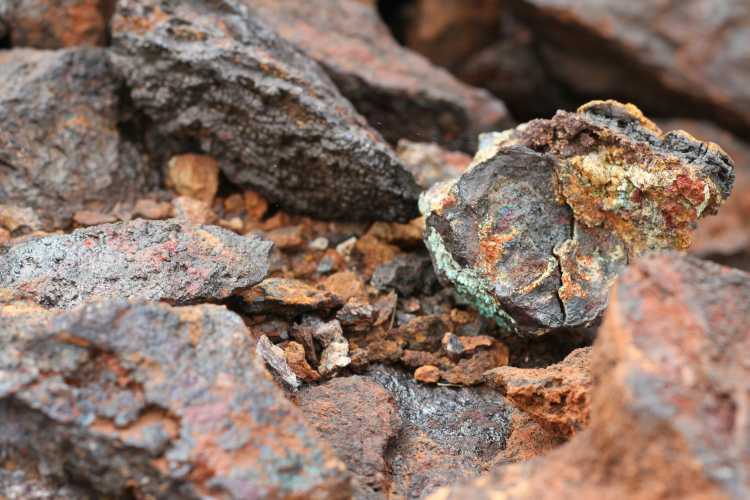
India-Chile CEPA: India and Chile have taken a decisive step toward deepening bilateral economic ties by signing the terms of reference for a Comprehensive Economic Partnership Agreement on May 8, 2025. The document, signed in New Delhi by Chilean Ambassador Juan Angulo and Vimal Anand, Joint Secretary and Chief Negotiator for India, sets the stage for formal negotiations. This move builds on a two-decade-old economic relationship that began with the Framework Agreement on Economic Cooperation in 2005, followed by a Preferential Trade Agreement in 2006.
The relationship was further strengthened in 2017 when an expanded PTA came into effect. Between 2019 and 2021, three rounds of talks were held to explore additional areas of cooperation. Now, with the ToR signed, the focus shifts to a more ambitious framework under CEPA, which aims to cover a wider range of sectors—including micro, small and medium enterprises (MSMEs), digital services, critical minerals, and investment facilitation.
READ | Lessons for India from Trump’s public health revamp
Modest trade volume, emerging opportunities
Despite a long-standing framework for engagement, bilateral trade between India and Chile remains relatively modest. In FY 2023-24, total trade stood at $2.7 billion, with India exporting goods worth $1.18 billion and importing $1.51 billion—resulting in a trade deficit of $331 million. Chile was India’s 55th largest export destination and 49th largest source of imports, accounting for just 0.24% of India’s total trade.
India’s export basket to Chile is largely industrial and manufactured: vehicles, pharmaceutical products, machinery, organic chemicals, textiles, electrical equipment, plastics, and leather articles. Chile’s exports to India are heavily resource-driven—metals such as copper, lithium, molybdenum, iron, and aluminium; iodine; edible nuts; and coke.
India’s dependence on Chile for critical raw materials, particularly lithium and copper, has strategic relevance given India’s push for electric vehicles and clean energy infrastructure. Chile, home to some of the world’s largest lithium reserves, could play a key role in India’s clean tech ambitions, provided trade arrangements facilitate smoother access.
Comparative advantage and trade potential
The trade potential between the two nations can be assessed using the Revealed Comparative Advantage (RCA) index. An RCA value above 1 signals a product in which a country has a relative export strength. India displayed RCAs greater than 1 in six product categories with Chile in 2022—hides and skins (7.2), textiles and clothing (2.87), transportation (2.72), chemicals (1.88), footwear (1.14), and metals (1.12). These indicate India’s export competitiveness in traditional and industrial goods.
Chile, in turn, had RCAs above 1 in minerals (49.86), wood (6.93), and vegetables (2.15). The RCA value for minerals is particularly striking, underscoring Chile’s strength in this category and the potential for India to benefit from greater access through a CEPA.
Simulating gains and losses
To evaluate the potential effects of tariff liberalisation, a tariff simulation using the Partial Equilibrium Method (TINA) was conducted. The results are encouraging but merit caution. If India were to remove tariffs on imports from Chile, Chile would benefit from a net trade creation effect of $256.64 million. Conversely, if Chile reduced tariffs on Indian exports, India would see a net trade creation effect of $280.19 million—larger than Chile’s gain.
In both scenarios, the simulations suggest welfare-enhancing outcomes for each country, with increased trade efficiency and market access. These outcomes point toward the potential for mutually beneficial liberalisation, especially in goods where each country enjoys comparative advantages.
Lessons from the past
India’s experience with past Free Trade Agreements (FTAs) offers important lessons. Agreements with ASEAN, Japan, and South Korea have not yielded favourable trade balances; in many cases, trade deficits widened following liberalisation. For instance, India’s trade deficit with ASEAN more than doubled in the years following the implementation of the ASEAN-India FTA. Similar patterns are observed with Japan and Korea.
The consistent rise in India’s trade deficit with Chile—from 2018-19 onward, with the exception of a brief surplus in 2020-21—should not be overlooked. As India negotiates CEPA, it must carefully assess product-specific sensitivities and ensure that liberalisation is calibrated to protect vulnerable domestic sectors.
India-Chile CEPA: Expanding the scope beyond tariffs
Unlike traditional FTAs, a well-designed CEPA can go beyond goods trade and delve into investment, services, and cooperation in emerging sectors. India’s burgeoning digital services industry and Chile’s mineral wealth could be complementary in a forward-looking agreement. Provisions that promote collaboration on sustainable mining practices, facilitate technology transfer, and build resilient MSME linkages could create durable economic value.
Moreover, given the ongoing global push for secure supply chains in critical sectors—such as renewable energy and electric mobility—India must explore strategic agreements that give it preferential access to key inputs like lithium and copper, without over-exposing itself to import dependency in finished goods.
India’s engagement with Chile through CEPA holds strategic and economic promise. But the experience of past trade deals and the emerging deficit trend signal the need for prudence. The negotiation must balance liberalisation with domestic safeguards, and ensure that gains are equitably distributed across sectors.
The opportunity to deepen economic cooperation with a resource-rich Latin American partner should not be missed. Yet, as with all bilateral trade deals, success will hinge on the fine print—rules of origin, safeguard mechanisms, and dispute resolution frameworks. India must walk into the CEPA negotiations with both ambition and caution.
Dr Rajeev Verma is Assistant professor (Economics), Sri Aurobindo college evening, University of Delhi.
